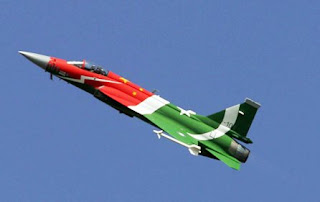
Sunday, December 27, 2009
Tuesday, October 27, 2009
Wednesday, September 2, 2009
Thursday, April 16, 2009
COMPUTER HISTORY
CHARLES BABBAGE THE BRAIN WHO INVENTED THE COMPUTER:
Though Silicon Valley may be the heart of the commercialisation of all things digital, it is the British who can proudly boast having invented the computer. Indeed, so proud are the British of the work done by eccentric British mathematician and inventor Charles Babbage, that the Science Museum in London has subsequently built the machines he conceived and the Royal College of Surgeons has preserved his brain - the brain invented the computer.
In Babbage's time, mathematical tables, such as logarithmic and trigonometric functions, were generated by teams of mathematicians. Babbage (1791-1871) became frustrated with the many mistakes in these tables which were produced for navigation, engineering, banking and insurance and dreamed of removing the human element from these calculations. He proposed the first computer, a machine he called "the difference engine", in 1822 - it was the size of a house, could store a program, was powered by steam and could even print results.
He worked on the Difference Engine for a decade, before his work opened his mind to the possibilities and he began work on the first general-purpose computer, which he called the Analytical Engine.
Babbage's equally celebrated assistant was Augusta Ada King, the Countess of Lovelace (1815-1842) and the daughter of English poet Lord Byron. Ada was perhaps the only person who understood Babbage's work at a detailed level.
As his assistant, she performed many of the functions of recognisable modern-day counterparts - she sought and received funding and grants from the British Government on several occasions (VC raising), she communicated the benefits of the machines to the public (PR) and she created instruction routines for the machine (computer programmer). Such was her influence, that the programming language ADA was named in her honour.Babbage's steam-powered Analytical Engine was primitive by today's standards, though it outlined the basic elements of a modern general purpose computer and was a breakthrough concept.
Consisting of over 50,000 components, the basic design of the Analytical Engine included input devices in the form of perforated cards containing operating instructions and a "store" for memory of 1,000 numbers of up to 50 decimal digits long. It also contained a "mill" with a control unit that allowed processing instructions in any sequence.
Babbage copied the idea of punch cards to encode machine instructions from the Jacquard loom.Babbage's reputation as a visionary and engineer was vindicated when several of the machines he designed, notably the second Difference Engine and its 2.5 tonne printer, were built by the London Science Museum to commemorate the 200th anniversary of his birth in 1991.
The machines had not been built at the time, mainly due to lack of funds, increasing belief that Babbage was a crackpot. It was subsequently proven that that the critical tolerances required by his machines exceeded the metallurgy and technology available at the time.Built from his original plans, not only did they work, they worked exceptionally well.
The Difference Engine was accurate to 31 decimal places and when the team of engineers finished building a replica of what would have been the world's first computer printer, they were astound-ed at its complexity and feature sets.
Designed to automatically print the computational tables he had dreamed he might produce automatic-ally, the 2.5 tonne dedicated printing press was capable of being set to print different numbers of columns, with adjust-ments for the height between the lines, the space between columns.
Though Silicon Valley may be the heart of the commercialisation of all things digital, it is the British who can proudly boast having invented the computer. Indeed, so proud are the British of the work done by eccentric British mathematician and inventor Charles Babbage, that the Science Museum in London has subsequently built the machines he conceived and the Royal College of Surgeons has preserved his brain - the brain invented the computer.
In Babbage's time, mathematical tables, such as logarithmic and trigonometric functions, were generated by teams of mathematicians. Babbage (1791-1871) became frustrated with the many mistakes in these tables which were produced for navigation, engineering, banking and insurance and dreamed of removing the human element from these calculations. He proposed the first computer, a machine he called "the difference engine", in 1822 - it was the size of a house, could store a program, was powered by steam and could even print results.
He worked on the Difference Engine for a decade, before his work opened his mind to the possibilities and he began work on the first general-purpose computer, which he called the Analytical Engine.
Babbage's equally celebrated assistant was Augusta Ada King, the Countess of Lovelace (1815-1842) and the daughter of English poet Lord Byron. Ada was perhaps the only person who understood Babbage's work at a detailed level.
As his assistant, she performed many of the functions of recognisable modern-day counterparts - she sought and received funding and grants from the British Government on several occasions (VC raising), she communicated the benefits of the machines to the public (PR) and she created instruction routines for the machine (computer programmer). Such was her influence, that the programming language ADA was named in her honour.Babbage's steam-powered Analytical Engine was primitive by today's standards, though it outlined the basic elements of a modern general purpose computer and was a breakthrough concept.
Consisting of over 50,000 components, the basic design of the Analytical Engine included input devices in the form of perforated cards containing operating instructions and a "store" for memory of 1,000 numbers of up to 50 decimal digits long. It also contained a "mill" with a control unit that allowed processing instructions in any sequence.
Babbage copied the idea of punch cards to encode machine instructions from the Jacquard loom.Babbage's reputation as a visionary and engineer was vindicated when several of the machines he designed, notably the second Difference Engine and its 2.5 tonne printer, were built by the London Science Museum to commemorate the 200th anniversary of his birth in 1991.
The machines had not been built at the time, mainly due to lack of funds, increasing belief that Babbage was a crackpot. It was subsequently proven that that the critical tolerances required by his machines exceeded the metallurgy and technology available at the time.Built from his original plans, not only did they work, they worked exceptionally well.
The Difference Engine was accurate to 31 decimal places and when the team of engineers finished building a replica of what would have been the world's first computer printer, they were astound-ed at its complexity and feature sets.
Designed to automatically print the computational tables he had dreamed he might produce automatic-ally, the 2.5 tonne dedicated printing press was capable of being set to print different numbers of columns, with adjust-ments for the height between the lines, the space between columns.
Tuesday, April 7, 2009
Monday, April 6, 2009
Saturday, April 4, 2009
Thursday, April 2, 2009
Wednesday, April 1, 2009
Tuesday, March 24, 2009
Tuesday, March 17, 2009
Saturday, March 14, 2009
Monday, March 9, 2009
The Mystery of Universe still alive
THE MYSTERY OF UNIVERSE IS STILL ALIVE...,
U”ni*verse\, n. [L. universum, from universus universal; unus one + vertere, versum, to turn, that is, turned into one, combined into one whole; cf. F. univers. See One, and Verse.] All created things viewed as constituting one system or whole; the whole body of things, or of phenomena;
The word “Universe” implies that there is only one state of existence (the root uni-), and this may as well be true. We do not know anything about other forms of existence, albeit there are possible signs of possibilities of possible parallel universes or dimensions. Ours, in which we exist in (if you happen to be reading this in the same 4-dimensional, expanding universe that I am writing in), has the specific set of natural laws that govern all that are. Hydrogen atoms are this big, gravity works this way, light is just waves of photons or whatever, etc etc etc etc etc (times infinity). My universe, my perception of our existence is as follows: anything can happen, even things that we can’t imagine.

The single most frustrating thing about our minds is that anything that we imagine is based off of our experiences. For example, our ideas of “extremely bizarre” are just things that are present in our lives put together in a way that doesn’t make sense to us: we imagine monsters that have three heads, eyes in place of their hands, and arms that have five joints. The parts of the monster are still normal: head, eye, and arm; it’s just put together in a weird way. We can’t imagine things that don’t exist. Most people can’t imagine or even have the idea that it may be possible for some kind of life form could be made up of some mysterious force and breathe empty space. Even this far-fetched concept that I just made up is based on my experience: I’ve encountered life forms, I know of forces (such as gravity and magnetism), and I know of empty space. Do you get it? We’re limited to what we’ve experienced. It totally, completely, absolutely sucks.
So we’re left to deal just with what we have.
The worst part of all of this is, you won’t get what I’m talking about unless you’ve had thoughts that are similar or a branch of these thoughts.
SOURCE: taeworld.wordpress.com/the-universe/
U”ni*verse\, n. [L. universum, from universus universal; unus one + vertere, versum, to turn, that is, turned into one, combined into one whole; cf. F. univers. See One, and Verse.] All created things viewed as constituting one system or whole; the whole body of things, or of phenomena;
The word “Universe” implies that there is only one state of existence (the root uni-), and this may as well be true. We do not know anything about other forms of existence, albeit there are possible signs of possibilities of possible parallel universes or dimensions. Ours, in which we exist in (if you happen to be reading this in the same 4-dimensional, expanding universe that I am writing in), has the specific set of natural laws that govern all that are. Hydrogen atoms are this big, gravity works this way, light is just waves of photons or whatever, etc etc etc etc etc (times infinity). My universe, my perception of our existence is as follows: anything can happen, even things that we can’t imagine.

So we’re left to deal just with what we have.
The worst part of all of this is, you won’t get what I’m talking about unless you’ve had thoughts that are similar or a branch of these thoughts.
SOURCE: taeworld.wordpress.com/the-universe/
Pak Falcon in action
WATCH POWER OF PAKISTAN
AE SHAHEEN TERI PARVAZ SE JALTA HAI ZAMANA
TU APNE PAROIN SE ISSE OUR HAWA DE
Sunday, March 8, 2009
The search for life

Life on other planets is always going to be an exciting subject for debate. But how do we find out if life really exists elsewhere in the Universe? One way is to travel to the planets, either with remotely operated probes or with manned spacecraft.
Mars is currently the only planet in our Solar System on which there is a strong possibility of finding life, either past or present. ESA’s Mars Express is Europe’s first mission to the Red Planet, and its Beagle 2 lander will perform on-the-spot experiments to search for signs of this life.
In 2004, ESA's Huygens probe to Titan, a moon of Saturn, could provide vital information towards the great mystery of how life began on Earth. Later, Rosetta will be the first spacecraft to land on a comet, analysing its surface for organic compounds that could be the building blocks of life. This will help us to understand if life on Earth began with the help of 'comet seeding'.
Constellation of Lacertat:
Mars is currently the only planet in our Solar System on which there is a strong possibility of finding life, either past or present. ESA’s Mars Express is Europe’s first mission to the Red Planet, and its Beagle 2 lander will perform on-the-spot experiments to search for signs of this life.
In 2004, ESA's Huygens probe to Titan, a moon of Saturn, could provide vital information towards the great mystery of how life began on Earth. Later, Rosetta will be the first spacecraft to land on a comet, analysing its surface for organic compounds that could be the building blocks of life. This will help us to understand if life on Earth began with the help of 'comet seeding'.
Constellation of Lacertat:
First, find the stars with planets...
However, these missions are only looking for life within our own Solar System. But how do we find life on planets around other stars? ESA has a plan for searching for this life in other solar systems. 
First you have to find the stars that have planets. There are too many stars to analyse them all, so you have to choose a small part of the sky as your starting point. Next you have to decide what kind of planets you are looking for.
With Earth-based telescopes, the only planets we have detected around other stars have been giant gaseous worlds, like Jupiter, over 10 times the diameter of the Earth. Scientists believe we should be looking for rocky, Earth-like planets, because a solid surface is needed on which organic molecules can form and develop into life.
Artist's impression of Corot

First you have to find the stars that have planets. There are too many stars to analyse them all, so you have to choose a small part of the sky as your starting point. Next you have to decide what kind of planets you are looking for.
With Earth-based telescopes, the only planets we have detected around other stars have been giant gaseous worlds, like Jupiter, over 10 times the diameter of the Earth. Scientists believe we should be looking for rocky, Earth-like planets, because a solid surface is needed on which organic molecules can form and develop into life.
Artist's impression of Corot
...then decide what kind of planets...
planets in short-period orbits around nearby stars.
It will use its 30-centimetre telescope to look at few thousand stars, monitoring changes in their brightness caused by planets crossing in front of them. ...
It will use its 30-centimetre telescope to look at few thousand stars, monitoring changes in their brightness caused by planets crossing in front of them. ...
Then identify signs of life...
When we have found some suitable planets, then we can look for signs of life. ESA will continue the search into the second decade of the century with the Darwin mission. Darwin's main objective is to find the most likely places for life to develop - at least as we know it!

Artist's impression of DarwinDarwin will make observations in the infrared since life on Earth leaves its mark in our atmosphere at these wavelengths. On Earth, biological activity produces gases that mingle with our atmosphere.
For example, plants give out oxygen and animals expel carbon dioxide and methane. This flotilla of eight spacecraft will survey 1000 of the closest stars, looking for rocky planets and analysing their atmospheres for this evidence of possible life.

Artist's impression of DarwinDarwin will make observations in the infrared since life on Earth leaves its mark in our atmosphere at these wavelengths. On Earth, biological activity produces gases that mingle with our atmosphere.
For example, plants give out oxygen and animals expel carbon dioxide and methane. This flotilla of eight spacecraft will survey 1000 of the closest stars, looking for rocky planets and analysing their atmospheres for this evidence of possible life.
Saturday, March 7, 2009
Was there water on early Mars?

Valley networks suggest that rivers once flowed on Mars
Was there water on early Mars?
Not only does Mars have the largest volcanoes and deepest canyons in the Solar System, it also shows evidence for the most catastrophic floods. Large channels carved by t hese floods drain into the northern plains, lending support for the existence of an ancient ocean over most of the northern hemisphere. Valley networks that criss-cross the southern highlands were also probably formed by water. And many craters, especially at high latitudes, are surrounded by fluidised ejecta resembling the ring of splattered debris around a stone dropped in soft mud. This suggests that there was underground water or ice in early times, and possibly more recently.
hese floods drain into the northern plains, lending support for the existence of an ancient ocean over most of the northern hemisphere. Valley networks that criss-cross the southern highlands were also probably formed by water. And many craters, especially at high latitudes, are surrounded by fluidised ejecta resembling the ring of splattered debris around a stone dropped in soft mud. This suggests that there was underground water or ice in early times, and possibly more recently.
Valley networks suggest that rivers once flowed on MarsIf water was largely responsible for these features, however, it has long since disappeared: most of the evidence is more than 3800 million years old. When Mars was a mere infant (like Earth, the planet is 4500 m illion years old) much of its atmosphere and all of any surface water vanished. Today, atmospheric pressure at ground level is only about one hundredth that on Earth. So where did the atmospheric gases and water go and why? Each of the seven instruments on board the Mars Express orbiter will contribute towards the answer.
illion years old) much of its atmosphere and all of any surface water vanished. Today, atmospheric pressure at ground level is only about one hundredth that on Earth. So where did the atmospheric gases and water go and why? Each of the seven instruments on board the Mars Express orbiter will contribute towards the answer.
Artist’s impression of water under the martian surfaceThe water could have been lost to space, trapped underground, or both. Four of the instruments on Mars Express (ASPERA, SPICAM, PFS and MaRS) will observe the atmosphere and reveal processes by which water vapour and other atmospheric gases could have escaped into space. Two instruments (HRSC, OMEGA) will examine the surface and in the process add to knowledge about where water may once have existed and where it could still lie underground. One (MARSIS) will actually look for underground water and ice.
look for underground water and ice. 
Was there water on early Mars?
Not only does Mars have the largest volcanoes and deepest canyons in the Solar System, it also shows evidence for the most catastrophic floods. Large channels carved by t
 hese floods drain into the northern plains, lending support for the existence of an ancient ocean over most of the northern hemisphere. Valley networks that criss-cross the southern highlands were also probably formed by water. And many craters, especially at high latitudes, are surrounded by fluidised ejecta resembling the ring of splattered debris around a stone dropped in soft mud. This suggests that there was underground water or ice in early times, and possibly more recently.
hese floods drain into the northern plains, lending support for the existence of an ancient ocean over most of the northern hemisphere. Valley networks that criss-cross the southern highlands were also probably formed by water. And many craters, especially at high latitudes, are surrounded by fluidised ejecta resembling the ring of splattered debris around a stone dropped in soft mud. This suggests that there was underground water or ice in early times, and possibly more recently. Valley networks suggest that rivers once flowed on MarsIf water was largely responsible for these features, however, it has long since disappeared: most of the evidence is more than 3800 million years old. When Mars was a mere infant (like Earth, the planet is 4500 m
 illion years old) much of its atmosphere and all of any surface water vanished. Today, atmospheric pressure at ground level is only about one hundredth that on Earth. So where did the atmospheric gases and water go and why? Each of the seven instruments on board the Mars Express orbiter will contribute towards the answer.
illion years old) much of its atmosphere and all of any surface water vanished. Today, atmospheric pressure at ground level is only about one hundredth that on Earth. So where did the atmospheric gases and water go and why? Each of the seven instruments on board the Mars Express orbiter will contribute towards the answer. Artist’s impression of water under the martian surfaceThe water could have been lost to space, trapped underground, or both. Four of the instruments on Mars Express (ASPERA, SPICAM, PFS and MaRS) will observe the atmosphere and reveal processes by which water vapour and other atmospheric gases could have escaped into space. Two instruments (HRSC, OMEGA) will examine the surface and in the process add to knowledge about where water may once have existed and where it could still lie underground. One (MARSIS) will actually
 look for underground water and ice.
look for underground water and ice. 
Geography of Mars

The Valles Marineris hemisphere of Mars
Geography of Mars
Although Mars is a small planet – its radius is just a little over half of Earth's – we now know that it boasts scenery on a scale that makes Mount Everest and the Grand Canyon seem unimpressive by comparison. Running from the eastern flanks of the rise, roughly along the equator, is Valles Marineris.
This is a split in the Martian crust 4000 kilometres long (about a fifth of the distance around the whole of Mars), up to 600 kilometres wide and seven kilometres deep. The Grand Canyon is a mere 450 kilometres long, up to 29 kilom
 etres wide and 1.6 kilometres deep.
etres wide and 1.6 kilometres deep. Size comparison between Earth and MarsThen there is the Hellas Basin in the southern hemisphere, which is an enormous impact crater 2300 kilometres in diameter and more than nine kilometres deep.
But perhaps most striking of all is the general difference in height and surface roughness between the northern and southern hemispheres. The northern hemisphere is smooth and flat and on average six kilometres lower than the rugged highlands of the south.
Olympus Mons, 25 kilometres high, is the highest volcano in the Solar System
 It has the highest volcano in the solar system, Olympus Mons which stands at 26 kilometres above the surrounding plain: Mount Everest is only one third as high.
It has the highest volcano in the solar system, Olympus Mons which stands at 26 kilometres above the surrounding plain: Mount Everest is only one third as high.Olympus Mons lies at the western edge of another gargantuan feature, the Tharsis dome which is a 10 kilometre-high, 4000 kilometre-wide bulge in the Martian surface.
Send this page to a friend
Subscribe to:
Posts (Atom)





























